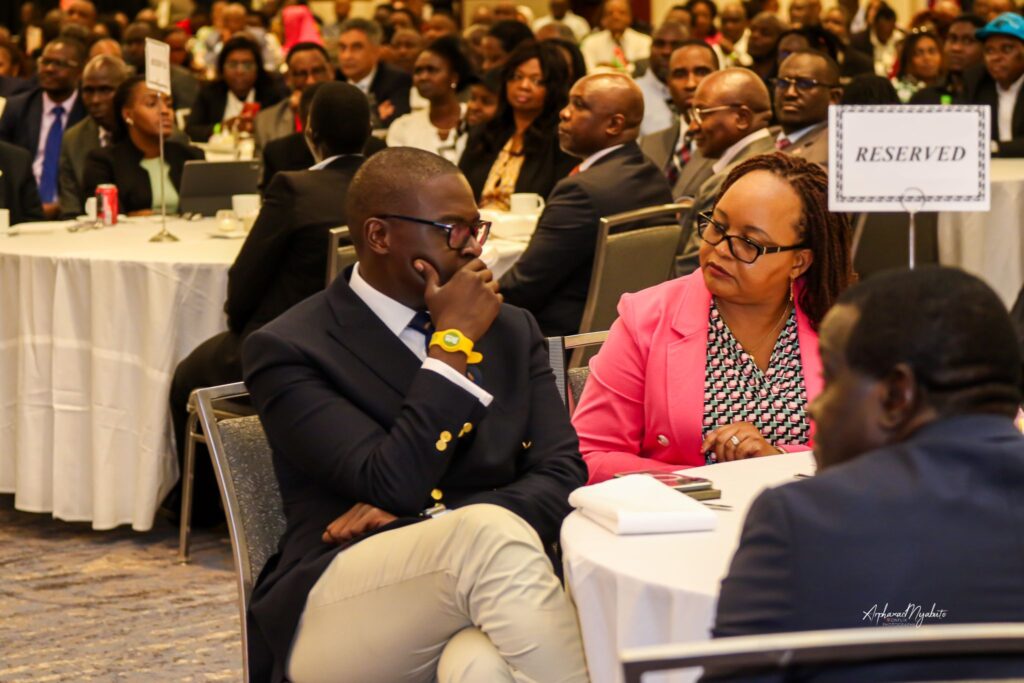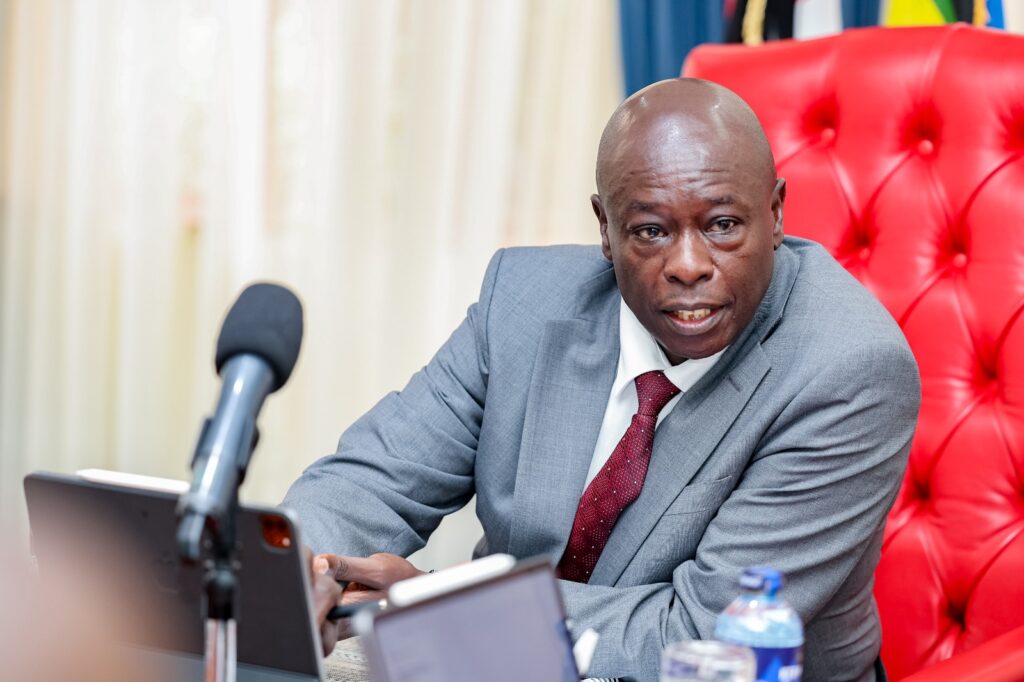
In the dynamic political landscape of Kenya, the recent tensions between Nairobi Governor Johnson Sakaja and Deputy President Rigathi Gachagua have captured the nation’s attention. As the fallout within the United Democratic Alliance (UDA) party persists, the two leaders have found themselves on opposing sides, engaging in a public battle that has far-reaching implications for the country’s governance and political stability.

The Sakaja-Gachagua Feud
The roots of the Sakaja-Gachagua feud can be traced back to the 2022 general elections, where both leaders emerged as prominent figures within the UDA party. Sakaja, a rising political star, secured the Nairobi gubernatorial seat, while Gachagua, a seasoned politician, was elected as the Deputy President, serving under President William Ruto.
Diverging Visions and Leadership Styles
From the outset, it became evident that Sakaja and Gachagua held distinct visions for the direction of the party and the country. Sakaja, known for his progressive and inclusive approach, sought to position himself as a unifying force, promoting policies that catered to the diverse needs of Nairobi’s residents. In contrast, Gachagua’s leadership style was perceived by some as more assertive and centralized, with a focus on consolidating power within the party’s inner circle.

Tensions over Policy Decisions
The tensions between the two leaders have become increasingly palpable in recent months, as they have clashed over key policy decisions affecting the capital city. Sakaja’s push for autonomy and his willingness to challenge the central government’s directives have put him at odds with Gachagua, who has sought to maintain a tighter grip on the party’s agenda.
One such instance was the ongoing dispute over the management of Nairobi’s public transport system. Sakaja’s bold move to take control of the city’s matatu (minibus) operations, a sector traditionally dominated by political interests, was met with resistance from Gachagua and other UDA party members. The governor’s determination to reform the chaotic public transport system, which has long been a source of frustration for Nairobi’s residents, has been perceived by some as a direct challenge to the party’s established power structures.

Accusations and Counteraccusations
As the feud escalated, both Sakaja and Gachagua have resorted to public accusations and counter-accusations, further exacerbating the divisions within the party. Sakaja has accused Gachagua of meddling in Nairobi’s affairs and undermining his authority as the county’s elected leader, while Gachagua has alleged that Sakaja is pursuing a personal agenda that undermines the party’s unity and cohesion.
The exchange of barbs has extended to the legislative arena as well, with both leaders leveraging their respective political influence to push for or against various bills and policies. The ongoing power struggle has left many Kenyans concerned about the potential impact on the delivery of essential services and the overall stability of the country’s governance.

The Political Implications
The Sakaja-Gachagua feud has far-reaching implications for Kenya’s political landscape, with potential consequences that extend beyond the immediate conflict between the two leaders.
Intra-Party Divisions
The tensions within the UDA party have been laid bare for the world to see, casting doubt on the party’s ability to maintain unity and cohesion. The public nature of the dispute has fueled speculation about the party’s internal power dynamics and the potential for further divisions, which could undermine its ability to effectively govern the country.
Devolution and County Autonomy
The conflict between Sakaja and Gachagua also highlights the ongoing debate around the balance of power between the national government and county administrations. Sakaja’s push for greater autonomy in Nairobi’s affairs has been perceived by some as a challenge to the centralized control favored by Gachagua and the national leadership. This tug-of-war over the boundaries of devolution could have significant implications for the future of Kenya’s decentralized governance system.

National Unity and Stability
Beyond the party politics, the Sakaja-Gachagua feud has the potential to impact the broader national unity and stability. As the country continues to grapple with economic challenges and social divisions, the spectacle of two prominent leaders engaging in public feuds could undermine public confidence in the government’s ability to address pressing issues. There are concerns that the ongoing discord could distract from the critical tasks of nation-building and service delivery.
The Way Forward
As the Sakaja-Gachagua feud continues to unfold, it is crucial for both leaders and the UDA party to find a constructive path forward that prioritizes the interests of the Kenyan people.
Fostering Intra-Party Dialogue
One potential solution lies in the establishment of effective channels of communication and dialogue within the UDA party. The leadership should actively work to bridge the gaps, facilitate open discussions, and find common ground on the key issues at hand. This could involve the intervention of impartial mediators or the establishment of a conflict resolution mechanism that allows for the airing of grievances and the exploration of compromise.
Clarifying Roles and Responsibilities
Additionally, there is a need for a clear delineation of roles and responsibilities between the national government and county administrations. The ongoing tensions have highlighted the need for a more robust and transparent framework that outlines the boundaries of power and the mechanisms for collaboration. This could involve the review and, if necessary, the refinement of existing laws and regulations governing devolution.
Promoting Transparency and Accountability
Ultimately, the resolution of the Sakaja-Gachagua feud and the broader challenges facing the UDA party will require a commitment to transparency and accountability. Both leaders should be willing to engage in open and honest dialogue, acknowledging their differences while also recognizing the need to prioritize the well-being of the Kenyan people. This may involve the establishment of independent oversight mechanisms and the cultivation of a political culture that values compromise and consensus-building over partisan posturing.
Potential Impact on the Balance of Power between National and County Governments
- The ongoing feud between Deputy President Rigathi Gachagua and various county governors seems to suggest that Gachagua views his role as an overarching authority over county administrations, despite the constitutional separation of powers between the national and county governments.
- The Constitution clearly establishes county governments as distinct and autonomous entities, not subject to “direction or control by the national government”. Governors do not report to the Deputy President, who has no power over county governments.
- However, Gachagua has stated that “there is no governor I cannot tell what to do”, implying that he believes playing a “Big Brother” role over county governments falls within his job description.
- This stance contradicts the principles of devolution and separation of powers outlined in the Constitution, which were intended to decentralize power and prevent an “imperial presidency”.
- If the national government attempts to exert undue influence or control over county administrations, it could undermine the independence and autonomy of the devolved system of governance.
- Such a power struggle could lead to increased tensions, conflicts, and even potential legal battles between the national and county governments, potentially hampering effective service delivery and development at the local level.
Measures to Prevent Undue National Government Influence over County Administrations
Strengthening Constitutional Safeguards
- The Constitution of Kenya clearly outlines the separation of powers and autonomy of county governments, which should be strictly upheld.
- Exploring the possibility of further constitutional amendments to reinforce the independence and decision-making authority of county administrations could help prevent overreach by the national government.
Clarifying Roles and Responsibilities
- Establishing clear and unambiguous guidelines on the respective roles, responsibilities, and boundaries between national and county governments can help mitigate conflicts and power struggles.
- Developing collaborative frameworks for intergovernmental cooperation, consultation, and dispute resolution mechanisms can promote harmonious working relationships.
Enhancing Judicial Oversight
- Empowering the judiciary to serve as an impartial arbiter in cases of national-county disputes, with the ability to rule on the constitutionality of government actions, can provide a check on undue influence.1415
- Encouraging county administrations to seek legal recourse when faced with national government overreach can reinforce the principle of separation of powers.
Fostering Transparency and Accountability
- Implementing robust transparency and accountability measures, such as mandatory public reporting, open data initiatives, and independent audits, can help expose and deter attempts at undue influence.
- Promoting active citizen engagement and oversight of both national and county government activities can further strengthen the checks and balances.
Strengthening County Capacities
- Investing in the institutional capacities, resources, and expertise of county administrations can empower them to effectively advocate for their autonomy and resist undue interference.
- Providing county governments with the necessary funding, infrastructure, and administrative support can bolster their ability to deliver services and fulfill their constitutional mandates.







